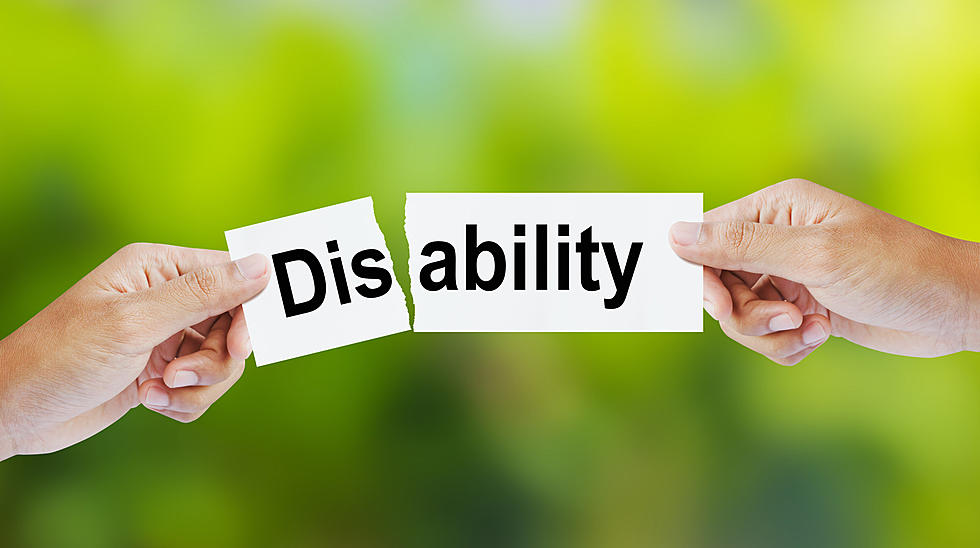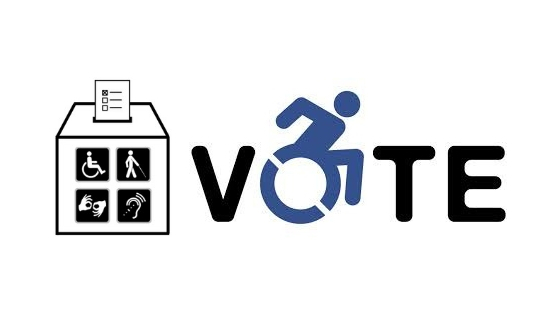
National Disability Employment Awareness Month: 75th Anniversary of Employing People of All Abilities

“Inclusion drives innovation” is the theme for this October’s National Disability Employment Awareness Month (NDEAM), an annual awareness campaign that celebrates the contributions of workers with disabilities and educates the public about the value of a workforce inclusive of their contributions, skills and talents.
This year marks the nation’s 75th observance of NDEAM as well as the 30th anniversary of the Americans with Disabilities Act (ADA). The roots of this month date back to 1945 when Congress enacted a law declaring the first week in October to be “National Employ the Physically Handicapped Week” focusing attention on the return of WWII soldiers with disabilities. Much has changed since then, but the fact that individuals with disabilities want to work and are a vital part of the American workforce remains the central message.
People with disabilities are experienced problem solvers with a proven ability to adapt,” said Office of Disability Employment Policy Deputy Assistant Secretary, Jennifer Sheehy. In the current environment where the pandemic has challenged every aspect of our society and economy, “now more than ever, flexibility is important for both workers and employers. National Disability Employment Awareness Month celebrates the ingenuity people with disabilities bring to America’s workplaces.”
In 2019, before the pandemic began to affect the U.S. economy, just 33 percent of people with disabilities ages 16 to 64 were employed, compared with 77 percent of people without disabilities. Since March, approximately 1 million US workers with disabilities have lost their jobs. Workers with disabilities represent only about 3 percent of the labor force, but they have experienced disproportionate labor market impacts of the COVID-19 pandemic. The US Bureau of Labor Statistic reported that since March, 1 in 5 workers with disabilities have been dismissed from employment compared to 1 in 7 in the general population.
Both the widespread shut down of businesses and the mass shift to “work from home” have directly and negatively impacted employees and job seekers with disabilities, as well as the delivery systems for disability employment services. Many people with disabilities work in businesses identified as essential during the pandemic, such as grocery stores, retail fulfillment centers and healthcare facilities. However, underlying health conditions may put them at greater risk in these public-facing roles. In addition, these essential workers often rely on supports from job coaches and employment specialists to navigate elements of their job responsibilities. Supported workers need assistance to understand universal precautions, to adjust to changing work responsibilities, manage anxiety and ensure communications are understood. Due to COVID-19 restrictions, many of this critical in-person support was put on hold.
Similarly, when the economy shut down earlier this year, many facility-based day rehabilitation programs and pre-vocational programs were forced to shut down. Community-based service providers needed to quickly pivot to provide supports remotely, utilizing various forms of readily available technology, often without complete assurance that remote service delivery would be reimbursed. Despite a relatively quick response from state and federal authorities to enhance flexibility and adjust funding requirements, community-based disability service providers across the country had to shut down programs and furlough staff. It is unclear how many of these programs will reopen. Because of social distancing requirements, some programs are not able to serve enough people right now to be financially feasible and programs that have attempted to reopen have seen low utilization.
National Disability Employment Awareness Month reminds us that people with disabilities deserve the same opportunities as everyone else to achieve personal satisfaction, economic security, and independence through employment. Employment advocates across the country are working to overcome challenges amid the pandemic to keep their clients engaged in training and employed. They are balancing the availability of jobs with the safety of their clients to maintain supported employment and other employment services in local communities so that people with disabilities can have the supports they need to remain successful and safe on their jobs.
Your Vote Counts!

November 3 is Election Day and every vote counts! Voting is one of our most important civil rights, but it is not always accessible for persons with disabilities. According to projections from Rutgers School of Management and Labor Relations, in 2020, more than 38 million eligible voters have disabilities. That is more than 16 percent of the electorate, roughly the population of California. The disability community has incredible potential to influence the outcome of elections and ensure that all candidates address issues that are important to people with disabilities. Lisa Schur, one of the study authors emphasizes “democracy only works if everyone is able to participate and vote” and notes “the sheer size of the disability electorate makes it clear that people with disabilities and their family members have the potential to swing elections.” Voters will be electing officials up and down the ballot. From the presidential election to school board elections, those elected will shape policies important to people with disabilities. Everything from the placement of curb cuts to health care laws can change based on who holds elected office.
Due to COVID-19 there are real questions about how voting will work this November. This year’s push to vote by mail underscores the variety of obstacles for voters with disabilities. Deque Systems, a software company focused on web and mobile accessibility solutions, recently published a report that found most states employ ballot applications that are inaccessible to people with disabilities. Their findings revealed the process to apply to vote by mail in most states is difficult, if not impossible, for persons with disabilities. One specific problem identified was trouble with screen reading software that does not clearly convey portions of the application needed for completion. When voting in person, Americans with disabilities also face access issues, including inaccessible polling locations, undertrained poll workers, and non-working voting machines employing assistive technology for people with vision or hearing issues. People with disabilities may have to take extra steps to vote and advocate for themselves to be able to cast their ballots accessibly, independently, and privately. Clearly that needs to change.
Voters with disabilities typically turn out in lower numbers than those without disabilities, but voter turnout among Americans with disabilities surged in 2018 and advocacy groups are hoping to repeat that this year despite the pandemic. It is important that everyone who can vote has the opportunity to do so. The deadline to register to vote in the November elections is October 13. No matter what state or territory you are in, or what your challenges may be, there are resources to help persons with disabilities register, learn their rights, and make a plan to vote.
National programs such as the Protections and Advocacy Voter Program, Paralyzed Veterans of America, and REV UP provide resources to ensure full participation in the electoral process for individuals with disabilities, including registering to vote, casting a vote, and accessing polling places. The Autism Self Advocacy Network (ASAN) has developed a tool kit to assist people with intellectual and developmental disabilities understand the voting process, and Easter Seals has provided a voter checklist. We have provided a list of these resources below:
https://www.aapd.com/advocacy/voting/
https://autisticadvocacy.org/policy/toolkits/voting/?utm_campaign=shareaholic&utm_medium=email_this&utm_source=email
https://www.easterseals.com/explore-resources/living-with-disability/people-with-disabilities-voting-checklist-at-polls.html
https://www.eac.gov/voter_resources/resources_for_voters_with_disabilities.aspx
https://www.nonprofitvote.org/voting-in-your-state/special-circumstances/voting-with-a-disability/
Special Education Amid Covid-19

With the onset of Covid-19, educators have found themselves in uncharted territory. In the spring, when schools closed their doors, they were forced to shift from in-school instruction to online instruction. For the roughly 7 million American students with special needs, the coronavirus pandemic and its attendant school closures have presented unique challenges. At school, these students received individualized instruction from trained professionals who understood their unique ways of thinking, perceiving, and processing. Many students had one-on-one professionals with them in the classroom in addition to their special education teacher and also received occupational, speech, and physical therapy. Following school closures in March, many schools made an effort to continue the services and therapies that help students with disabilities access their education, but others did very little. In a survey released in May by the organization Parent Together, only 1 in 5 families was receiving all the special education services they were entitled to.
For many special education students, the tools that other children use for remote learning—Zoom, Microsoft Teams, or printed work packets, are simply not accessible. For example, students with sensory disabilities often use assistive technology, but many online platforms are not compatible with assistive technology and certain lessons cannot be taught remotely. For low income families, internet access may be limited or unavailable. They lack printers or even paper to print lessons. The nature of neurological and learning differences means that many students with special needs find change and inconsistency particularly stressful. It is more difficult for them to be flexible and go with the flow, and they often do not have the attention to sit in front of a screen.
Receiving therapy remotely presents its own challenges. In some cases, parents were given a video to watch, instructing them how to provide therapies themselves. In other cases, students did receive real-time virtual therapy, but it required parents to gather a wide array of materials, find a quiet spot in their home, and then guide the child through every step of the therapy. Neither of these approaches is sustainable, and the therapies were not as effective as in-person sessions.
As schools begin reopening, many fear the loss of specialized instruction and therapies, and reliance on family resources has caused special education students to fall behind on the subjects and skills they had been working on before the pandemic. According to Shawn Ullman, Senior Director of National Initiatives at the ARC, “there’s a general belief that students with learning disabilities lost more learning” than other students. Some of the disparities that plague education are getting wider. Instead of attending the same school with similar access to supplies and instruction time, students are directly dependent on their home resources. Parents who work, have less means and/or less education, and their children, are at a significant disadvantage.
Solutions to education during a pandemic are complex. The issues inherent in education for those with special needs only add to the complexity. While some experts have advocated return to in-person learning to mitigate the academic and social losses associated with online learning, some students with disabilities have underlying conditions that make going to school during a pandemic especially risky. At the same time, many students have behavioral and other needs that are met much more effectively in the structured environment of school. One thing is certain, the federal government has not waived requirements under the Individuals with Disabilities Education Act, and schools are still required to comply with the services mandated by Individualized Education Programs. If you are concerned that your child is not receiving appropriate services, many advocacy groups are available to provide assistance.
Hope Trust serves clients throughout the United States.

